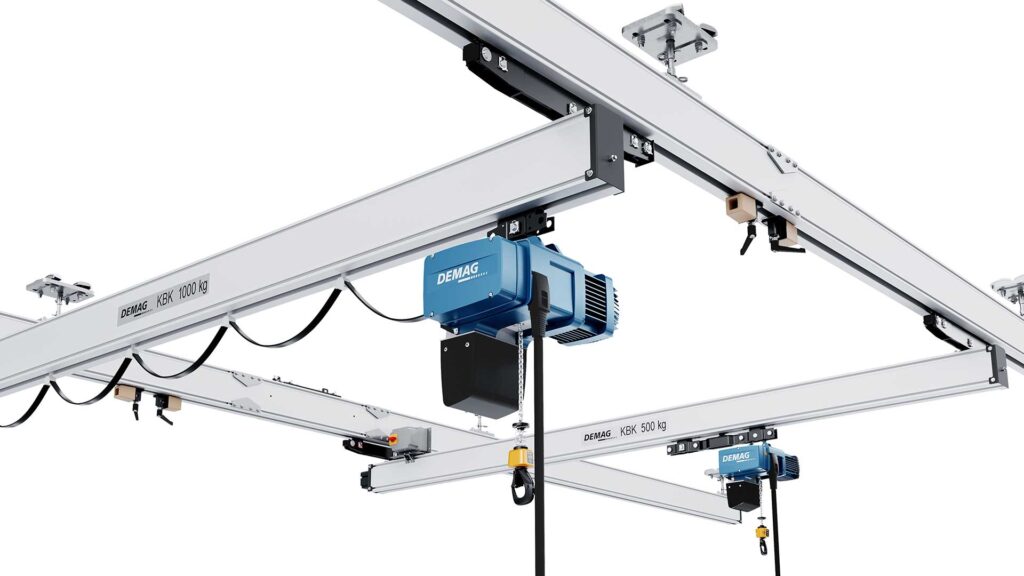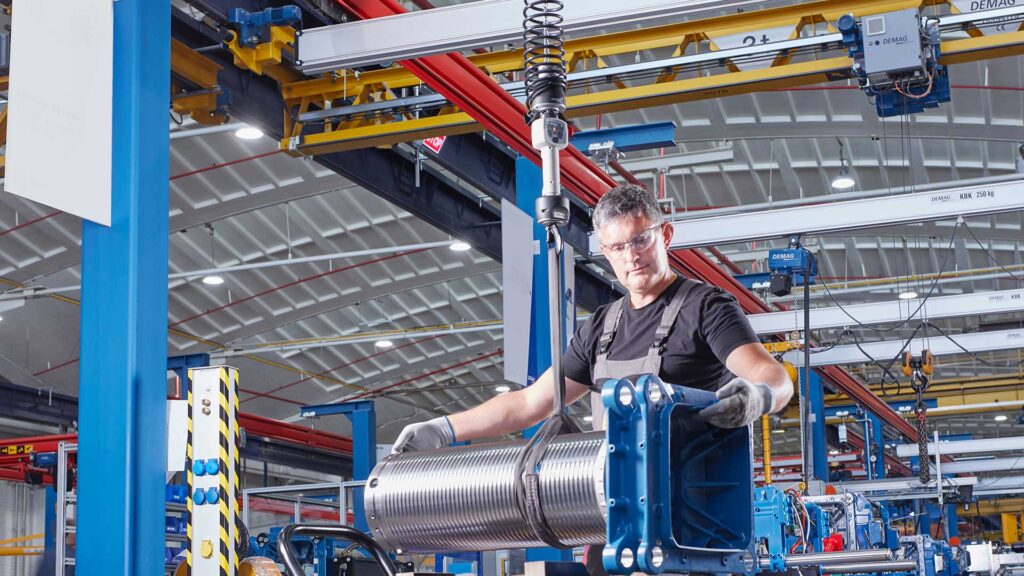Global demand for electric vehicles continues to surge and manufacturers are being pressed to scale their production while maintaining high quality and safety standards. A critical aspect of EV production is during the downstream part of the process, the battery assembly line. These assembly lines require precision, productivity and safety for operators.

Understanding EV Battery Assembly Lines
There are multiple stages with unique requirements and challenges in EV battery assembly. Typically the process includes steps where cells are prepared and stacked, modules are assembled, packs are assembled, testing and quality control, and finally packaging and shipping. Throughout these steps, handling heavy and sensitive components like battery cells and modules require specialized lifting and handling equipment. This equipment is vital for ensuring safety and efficiency.
Types of Lifting and Handling Equipment Used in EV Battery Manufacturing
Various types of lifting and handling equipment help navigate the complexity of EV battery manufacturing. With batteries potentially weighing up to 1,700 pounds for use in cars and up to 16,000 pounds for use in semi-trucks, it’s important to have the right lifting solution. Overhead cranes lift heavy modules and battery packs between assembly stations. Robotic arms are automated for precise handling and placement of battery cells and modules. Manipulator arms and balancers assist operators to lift, maneuver, and position heavy or cumbersome components. Automated guided vehicles (AGVs) can transport battery components and packs through the assembly line. Ergonomic hoists allow operators to eliminate manual lifting of all components and better perform assembly tasks.

Ergonomics
Even with ergonomic lifting equipment, operators are still faced with ergonomic risks, particularly with manual lifting. Repetitive lifting, awkward positions, and operator fatigue can lead to musculoskeletal disorders (MSDs). Eliminate awkward positions and manual lifting with workstation cranes, investment in ergonomic lifting aids, and continued operator training on safe handling can help reduce these risks.
Precision
Manufacturing and assembling EV batteries requires handling delicate components. This requires a high degree of precision. Assuring the equipment used during the assembly process can mitigate misalignment, improper handling, or sudden impacts can eliminate potential failures and safety hazards. Choosing the right lifting equipment and following the proper inspection and maintenance requirements keep equipment in the best working order for precise positioning.
Footprint and Space Utilization
Every manufacturing facility has space restrictions and optimizing the space you currently have is critical. Lifting equipment like freestanding workstation cranes can be an ideal fit within the facility footprint in areas that need serviced. Overhead cranes give operators ergonomic lifting capabilities and make assembly operations safer. Investing in the right overhead lifting solution will make the area efficient and productive.
Overhead lifting and handling equipment plays a crucial role in EV battery assembly lines. This equipment makes your operations safer and more ergonomic for operators and allows them to complete tasks more efficiently. Partnering with an equipment manufacturer who has products to meet your unique and demanding requirements will allow you to have a safer, more productive assembly line.
Learn more about the products Demag provides ideal for your EV battery assembly line!
